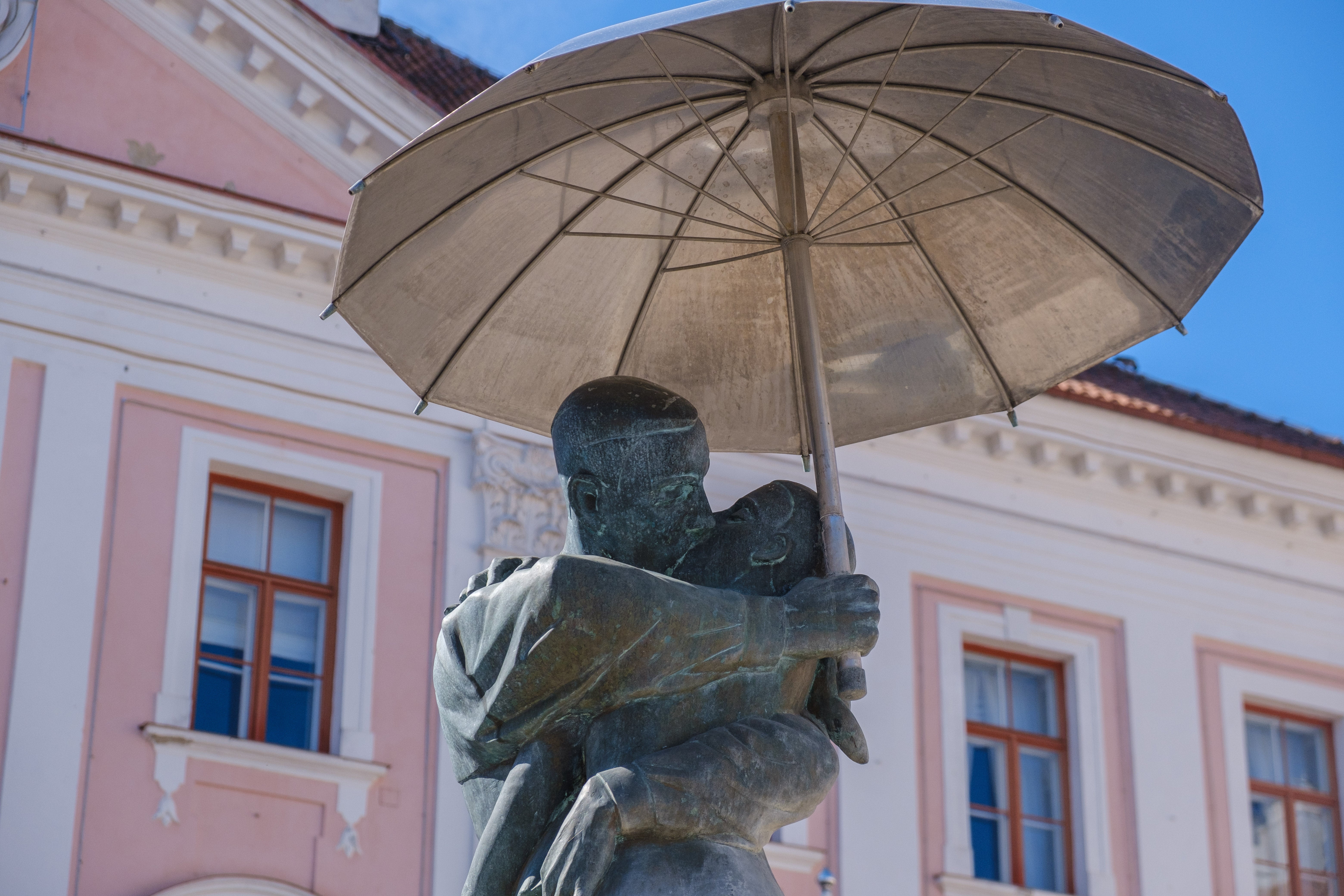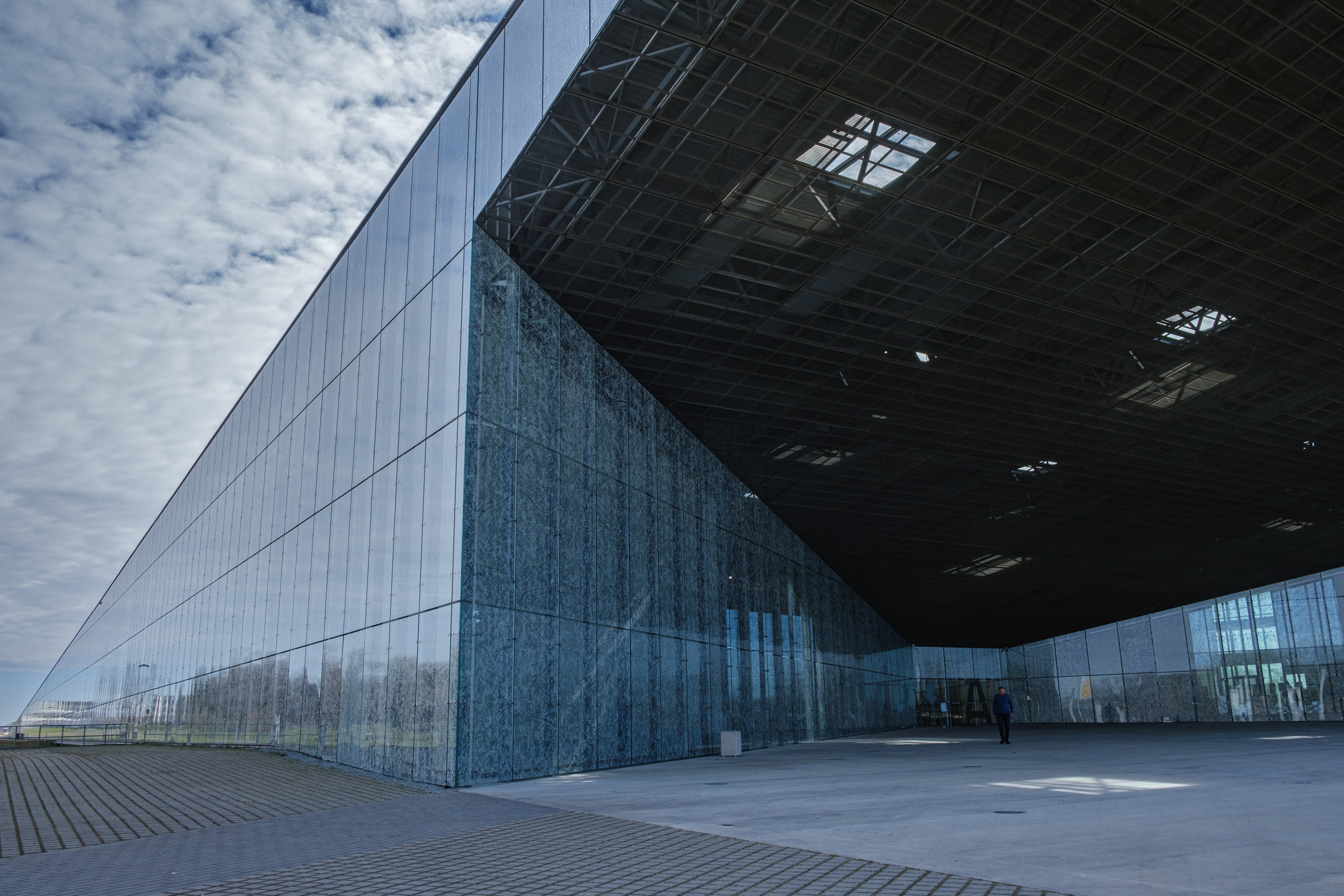
In the elegant Town Hall Square in the old town of Tartu, Estonia’s second biggest city and site of the country’s oldest, most important university, stands a statue in the middle of a fountain.
The Kissing Students portrays a young man and woman in a passionate, eternal lip-on-lip embrace, sheltered under an umbrella. On a date to be decided – Valentine’s Day would seem appropriate – the statue will be the focus of what will probably be one of the most publicised events in the 2024 European Capital of Culture programme when Tartu takes on the role.
The occasion invites residents and visitors to replicate the sculpture’s pose as one of a “variety of kissing activities” extolling the values of “openness, humanity and respect”. The main, mass kissing event in the square promises “unprecedented simultaneous kissing action”, organisers say, following a concert of Eurovision tunes, all of it broadcast live on TV.
Read more Europe travel:
- Greece island hopping: A guide to the best routes and how to explore Greek culture
- What it’s really like to buy a house through Italy’s one euro homes scheme
- The best hotels across Europe
In case you’re either licking your lips or outraged at the prospect of a wild 1960s-style speed-dating snogathon, that’s not quite what the organisers have in mind. Pecks on the cheek, or even on the hand, are as much a part of kissing culture as a meeting of lips, and there will also be a “First Kiss” educational element for schools to enhance sexual health and safety.

Such an open and communal display of affection is bound to attract attention, but this will be only one of the eye-catching items on an imaginative agenda for 2024. Visitors to Estonia, one of the three Baltic republics (along with Latvia and Lithuania), often head to the charming old town in the capital Tallinn, on the Baltic coast, without venturing much further. Tartu, a two-hour train ride from Tallinn to the south-east, intends to exploit its cultural capital status to attract visitors and acquaint them with its own considerable delights, as well as those of the surrounding region.
Top of the list of Tartu attractions at any time is the Estonian National Museum, whose sleek glass edifice, gradually sloping towards the ground from its towering triangular entrance, is an architectural statement of this small nation’s pride and independence. That’s before you even go in to marvel at the displays, with texts digitally translated at an interactive flash of your smart ticket, drawn from a collection of artefacts and documents numbering more than a million. Topics range through Estonian ethnology up to and beyond the years of Soviet rule from 1944 to 1991.
At the end of my own visit, I collared university student Katrin Alekand, finishing her shift as a museum guide, and ask her what she expects from the upcoming cultural capital programme.
“What I really like is that we’ll be focusing also on the areas around Tartu, on the historic town of Viljandi and the shores of Lake Peipsi,” she said, referring to the enormous body of water to the east of Tartu, slashed down the middle by the border with Russia.

The lake shore is home to communities of Orthodox “Old Believers”, whose annual autumn Onion Festival will feature on the 2024 cultural calendar as one of many nods to the region’s diversity. Estonia is predominantly Lutheran and has a sizeable Russian-speaking population of Orthodox persuasion, although it is sometimes described as of the world’s most atheist country.
The Emajõgi river running through Tartu links Peipsi with Võrtsjärv, another smaller but substantial lake to the west. The river will feature in next year’s plans, not least in the role played by the traditional – and unique – rounded timber-hull barges, such as the replica vessel Jõmmu, which is already a familiar sight on the Emajõgi. Jõmmu’s big sister is under construction at the Lodjakoda riverside shipyard under the supervision of the Emajõe Barge Society, using original designs and craftsmanship. The barge, whose name will be chosen in a competition, will be launched in time for the next year’s programme.
As of spring 2023, details of the programme and events are still being finalised and due to be revealed in October, building up to the grand opening on 26 January 2024. However, in addition to the kissing event, it’s agreed that a “Hybrid Democracy” festival is on the list, as is “Hidden Worlds Expanding”, an outdoor art show focusing on the needs of people with intellectual disabilities. The town of Viljandi is know for its song and music festivals, so it’s no surprise that it will bring those elements to the party.
The year’s itinerary will follow the theme “Arts of Survival”.
Top of the list of Tartu attractions at any time is the Estonian National Museum... an architectural statement of this small nation’s pride and independence.
“It’s prophetic that we chose this theme, because in 2019 when we made our pitch there was no Covid pandemic, no war in Ukraine and climate change was still not as urgent as it has become,” said Oliver Berg, line manager for the Europe component of the programme, one of four thematic threads along with “Earth”, “Humanity” and “Universe”.
“The ‘Arts of Survival’ theme seems even more poignant.”
Legacy is always a priority for this kind of event, and Tartu’s big year is no exception. One central aim is to create a model for other international events in terms of sustainability in all its aspects, from waste management to energy consumption, and from catering and water usage to transportation.
“CoC 2024 is going to be Estonia’s main event next year,” adds Berg. “It will be the best-known brand in Estonia next year. Our mission is to have at least a million visitors, with something sparkling going on the whole time in this city of only 100,000 people.”
Tartu will be on everyone’s lips, then – in more ways than one.
Air Baltic flies from Gatwick to Tallinn, from which it’s a two-hour train or bus ride to Tartu.
Read more on the best hotels in Europe







